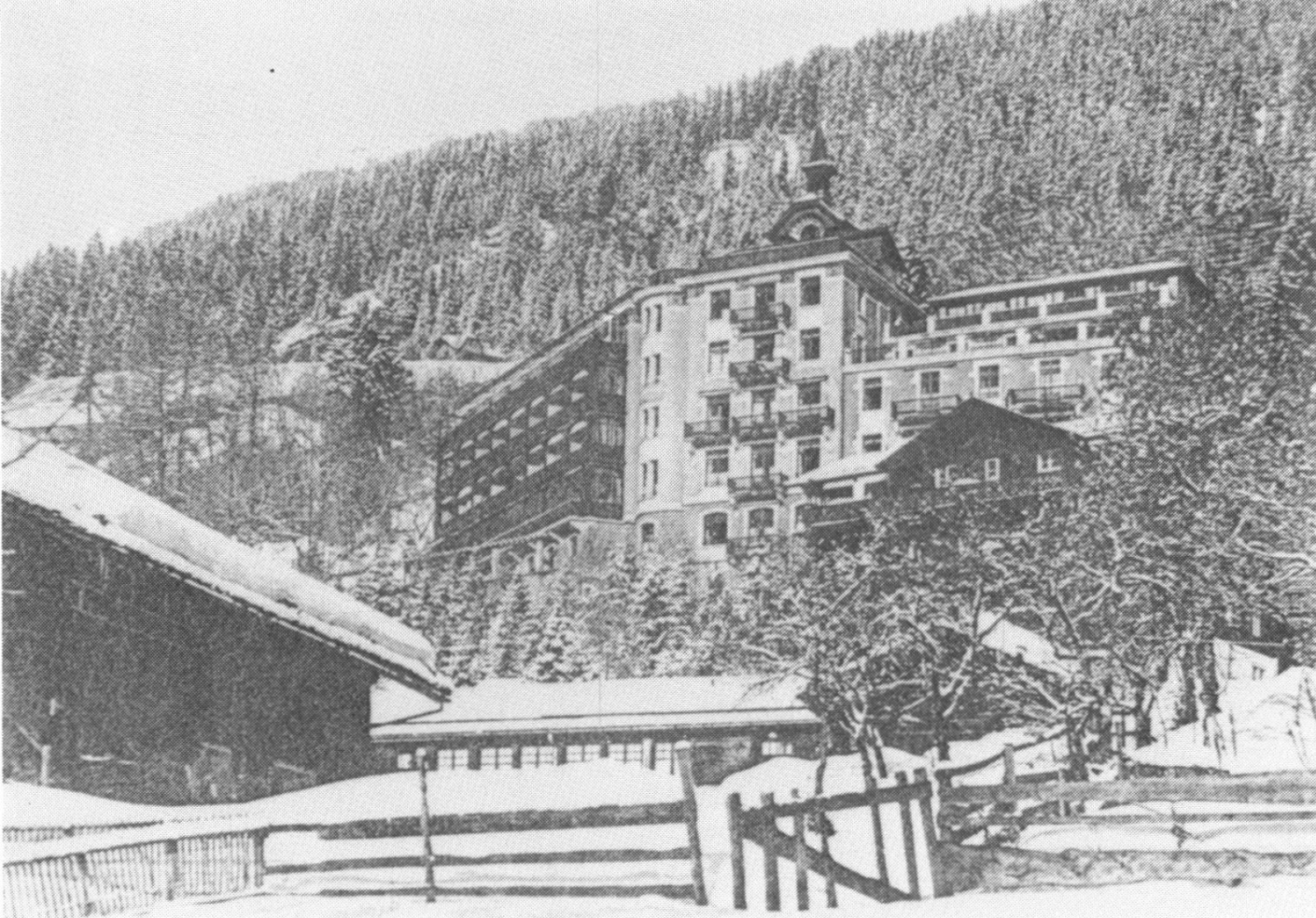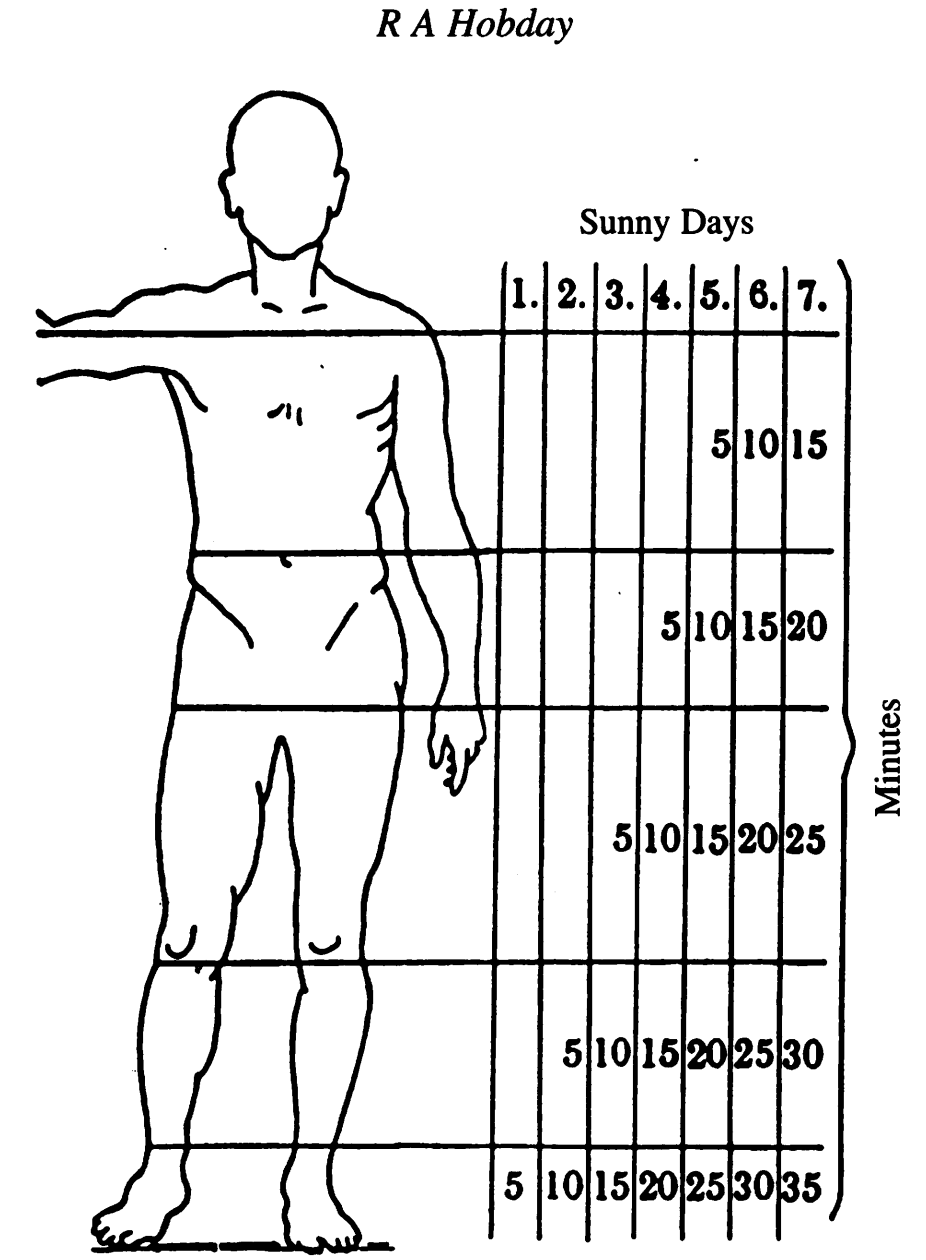Can sunlight be curative for infectious diseases?
In the late 1800s, when tuberculosis (TB) was at its peak, around 1 in 8 people were dying of this disease. The TB epidemic claimed many lives at a time when antibiotics were not yet discovered. In 1890, Robert Koch, a bacteriologist, studied the effects of sunlight on the bacteria that cause TB (tubercle bacillus, or mycobacterium tuberculosis). Continuing the work of Arther Downes and T P Blunt, who had discovered that light could kill bacteria, Koch found that sunlight could kill 100% of the mycobacterium tuberculosis in petri dishes (1).
Not long after this discovery, treatment centers for individuals with TB were designed and built to let in as much sunlight as possible. A doctor from Switzerland, Dr. Auguste Rollier, became a champion of this type of therapy and had several treatment centers built. These centers, called "sanatoria," had skylights, wrap-around decks and balconies for sunbathing, and plenty of windows for fresh airflow. The top floor of these clinics had a "solarium" in which patients could get direct streams of sunlight through the window-covered roof when weather conditions did not permit staying outside. However, if the weather was simply cold, outdoor air exposure was encouraged. The cold temperature increased metabolic activity and kept the body active in fighting infections (1).
 Image: Rollier's clinic Les Frenes. (By permission of Dr Rollier's family.)
Image: Rollier's clinic Les Frenes. (By permission of Dr Rollier's family.)
The thought and practice was, get these patients and their surroundings exposed to sunlight, and their TB should heal more quickly and spread less easily. The rationale was, "...every room occupied or visited by patients should be flooded by sunlight whenever possible, because, of all disinfectants, sunlight has been shown to be the most powerful. It is perhaps, together with pure air, the only certain non-liquid disinfectant for the tubercle bacillus" (1).
Remarkably, patients healed incredibly well from this practice. The majority of cases were spared surgery (which was common practice to treat TB that had reached the bones and joints), and patients simply left the clinic transformed from "weak, sickly tubercular patients into strong, deeply-tanned individuals who were free of the disease" (1).
Rollier developed a process of exposing patients to the sun in a very methodical fashion. The first day of sun exposure involved showing just the feet to the sun for five minutes while a white sheet covered the rest of the body. By the second day, the calves and feet would be exposed, and consecutive days involved exposing the knees and thighs, then the pelvis, trunk, and eventually shoulders and head after about three weeks.
Morning sunlight was prioritized, from about 6-9 AM, as the midday sun became too intense and counterproductive. Rollier said, "A very current mistake consists in thinking that the sun bath is all the more efficacious if prolonged or taken when the sun is at its hottest; this is an inconsistency against which Nature herself seems to warn us" (1). Direct midday sunlight was prioritized when there was an active, open wound, and in these cases, the open wound would be exposed to the sun's rays to promote disinfection and healing (1).
 Figure: Diagrammatic representation of the Rollier method of sunlight therapy. (After A Rollier, Heliotherapy, London, 1923.)
Figure: Diagrammatic representation of the Rollier method of sunlight therapy. (After A Rollier, Heliotherapy, London, 1923.)
Despite these miraculous cases of healing, the medical community at large was dismissive of sun exposure as therapy for disease. When Dr. Rollier presented his case reports and theories of sunlight curing TB, an audience of doctors walked out (1). Not only did his theories not match their conventional training of surgery-dominated treatment for TB, but his "cure" also required special clinic architecture and graduated sun exposure for each patient, which took much time and attention. Furthermore, there was little scientific explanation as to why this practice worked, and an understanding of vitamin D production, infrared light's impact on hormone production, and sunlight wavelength tissue penetration had yet to be understood (1, 2, & 3).
This practice of sun exposure for the healing of diseases and ailments became called "heliotherapy" and had a larger scope than just treating TB. Several notable practitioners besides Rollier furthered the practice. For example, Sir Henry Gauvain promoted heliotherapy for his patients and explained, "Sunlight stimulates and enlivens; it is of help in almost all conditions. It is the greatest of all natural tonics–like good champagne, it invigorates and stimulates; indulged in to excess it intoxicates and poisons. In suitably graduated doses, which vary greatly in individual cases, cumulative and favourable effects are produced which are not accompanied by those unfortunate sequelm associated with many drugs" (1) (emphasis my own). In other words, applied appropriately, heliotherapy produced better and more wide-ranging curing effects than the drugs available and without adverse side effects.
Rollier wrote a book in 1916 about his heliotherapy practices, which he titled "Le Pansement Solaire"-- "The Sun Bandage" (1).
I thoroughly enjoyed reading about the architecture and history of these sanitoriums and heliotherapy, and I have a few thoughts after learning.
- We would do well to have graduated sun exposure (time and amount of skin), building up to more exposure over time to mitigate unwanted reactions like burning or shock to the system.
- There is a detriment in avoiding the sun altogether, especially during times of illness. The same goes for fresh air exposure.
- Prioritizing morning sunlight exposure and or evening sun can be helpful for melatonin production (2) and is impactful in exposing the eyes and skin to near-infrared radiance (NIR). NIR can penetrate deep tissues in the body, including bones, muscles, and the brain (3). NIR from the sun is stronger at 6:00 AM than from the midday noon sun (3). This may be part of the reason morning sunlight was so curative for patients with TB-infected bones.
- There are benefits to sun exposure beyond vitamin D production (NIR, melatonin production, etc.), and it would be naive to think we can get all the benefits of the sun in a daily vitamin D capsule.
- Can you imagine modern hospitals designed with a balcony in each room or a top floor filled with bright sunshine and fresh airflow? For nothing else but the effect on morale, I'd surmise we'd have much quicker and hopeful discharges. (Another feature of these early 1900 sanatoria was a fireplace in each room to help with patients' moods (1)). *Que magnifique!*
- This information is hopeful for those concerned about skin cancer risk and sun exposure. Firstly, the benefits of heliotherapy largely come from morning and evening sun, at which times UV intensity is lowest (i.e., less skin damage). Secondly, there are benefits to early morning sun bathing that science is just beginning to understand, with the most promising, in my opinion, being the research on NIR, as discussed above. NIR wavelengths have immune-regulating effects and could, therefore, mitigate skin cancer risk and progression.
References
- Hobday R. A. (1997). Sunlight therapy and solar architecture. Medical history, 41(4), 455–472. https://doi.org/10.1017/s0025727300063043
- Tan, D. X., Reiter, R. J., Zimmerman, S., & Hardeland, R. (2023). Melatonin: Both a Messenger of Darkness and a Participant in the Cellular Actions of Non-Visible Solar Radiation of Near Infrared Light. Biology, 12(1), 89. https://doi.org/10.3390/biology12010089
- Barolet, Daniel & Christiaens, François & Hamblin, Michael. (2015). Infrared and Skin: Friend or Foe. Journal of Photochemistry and Photobiology B: Biology. 155. https://doi.org/10.1016/j.jphotobiol.2015.12.014